QuestionI just bought my first lab. She is always eating sticks and bark off of trees. She's only 3 months old and has already gotten a u.t.i. Another consern of mine is that she jumps up on my kids when she sees them playing.(my kids are 1 and 2 years old, that's way the jumping concerns me) Do you have any comments or advice?
Thank You
AnswerNormally eating sticks and bark doesn't hurt anything. If she is damaging young trees, you may want to try some of the paper or plastic guards meant to protect trees from rabbits. If she chews them up too, try wire mesh. Here is a link to what I had to do to protect my A/C lines, http://www.photolocker.net/images/Labman/KatetheAC.jpg
Consistently is very important in correcting jumping and other problems. Quickly correcting her each and every time she jumps on somebody is very important. Something bad has to happen each time. People are successful with a number of different things. One of the most gentle is to grab her front paws and hold her up. The traditional knee to the chest or step on her paws work well too. In each case apply ''Bad dog, its name off!'' in a firm, but not loud voice. Go ahead with it even if she is too quick to add a physical correction. This is more difficult with toddlers unable to make the corrections themselves. The powerful correction of withdrawing their attention may work better for them.
Just as you use a crib or a playpen with the children, you should use a crate with the puppy. Among other things it allows a puppy an undisturbed nap. It is only natural that a puppy resists its crate at first. What the puppy
wants more than anything else is to be others, you, anyone else in the
household, and any other pets. In our modern society, even if we are home,
other things distract us from the attention an uncrated puppy must have. The
only real solution is to crate the dog when you aren't around. The dog may be
happier in its den than loose in the house. It relaxes, it feels safe in its
den. It rests, the body slows down reducing the need for water and relieving
its self. Dogs that have been crated all along do very well. Many of them
will rest in their crates even when the door is open. I think the plastic
ones give the dog more of a safe, enclosed den feeling. Metal ones can be put
in a corner or covered with something the dog can't pull in and chew. Select
a crate just big enough for the full grown dog to stretch out in.
Leave it some toys. Perhaps a Kong filled with peanut butter. Don't leave
anything in the crate the dog might chew up. It will do fine without even any
bedding. You will come home to a safe dog and a house you can enjoy.
A dog that has not been crated since it was little, may take some work.
Start out just putting its toys and treats in the crate. Praise it for going
in. Feed it in the crate. This is also an easy way to maintain order at
feeding time for more than one dog.
The "shut the puppy in a safe room" is a fallacy. Very few houses even have a
safe room. How many of us have a room with a hard surfaced floor and nothing
else? Most rooms have electrical cords to chew if nothing else. In addition
to destroying anything a bored puppy finds to chew, it may choke or have
intestinal blockage from the pieces. I had a friend that left her dog in a
"safe" room. It ate a hole in the floor covering. The safe rooms fail to
give the dog the comfort of the enclosed space their instinct requires. Nor
do they restrict activity extending the time the dog can go without relieving
itself.
Are you having biting problems too?
Young Labs, which I know best, and other puppies tend to very bad about
biting. You see a litter of them, and all the ones that are awake are biting
another one or themselves. I am not even sure they realize that when they are
alone, if they quit biting, they would quit being bitten. At 3 to 4 months
they are getting their adult teeth, and it seems they spend every waking
moment biting or chewing. I maintain a Lab's favorite chew toy is another
Lab. Otherwise they settle for any person they can. They keep hoping to find
one that won't yelp and jerk their hand away, or growl "Bad dog." and clamp
their mouth shut. Then offer a chew toy. They keep trying despite hundreds
of corrections. Another good technique is to quit playing and go away. Be
sure to praise them when they are playing nice and not biting.
You just have to keep on correcting them, hundreds of times, not dozens.
Provide sturdy, safe toys such as Kongs and Nylabones. Avoid things they can
chew pieces off and choke on them. Keep them away from electrical cords.
Crates are essential for most young Labs and other dogs.
The pet stores are full of toys that many dogs will quickly chew up into
pieces they could choke on or cause intestinal blockages. If you are not
there to watch, stick to sturdy stuff such as Nylabones and Kongs. Keep a
close eye on chew toys and quickly discard anything that is coming apart in
pieces. Rawhide is especially bad because it swells after being swallowed.
These problems are the worst with, but not limited to, large, aggressive
chewers such as Labs.
Children's toys are not meant to stand the abuse of a young Lab. Be very careful to keep them away from the puppy. A puppy plus safe child toys can result in fragments unsafe for either.
If the UTI reoccurs, ask the vet about a change of diet.

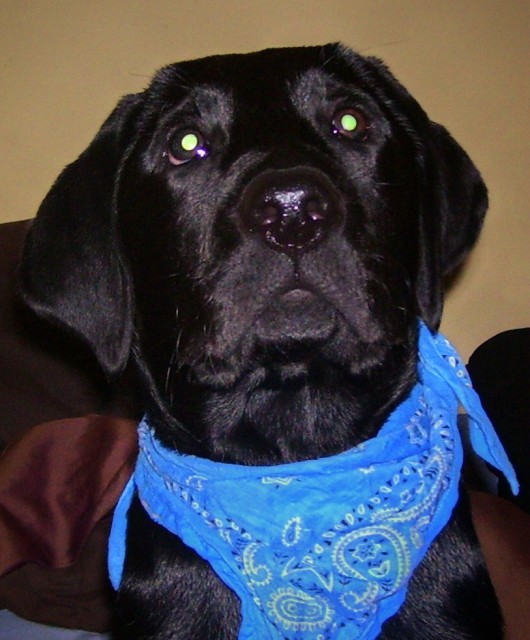 Eating Problems
Question
Datsun
I have a 9 month old,Black male Labrado
Eating Problems
Question
Datsun
I have a 9 month old,Black male Labrado
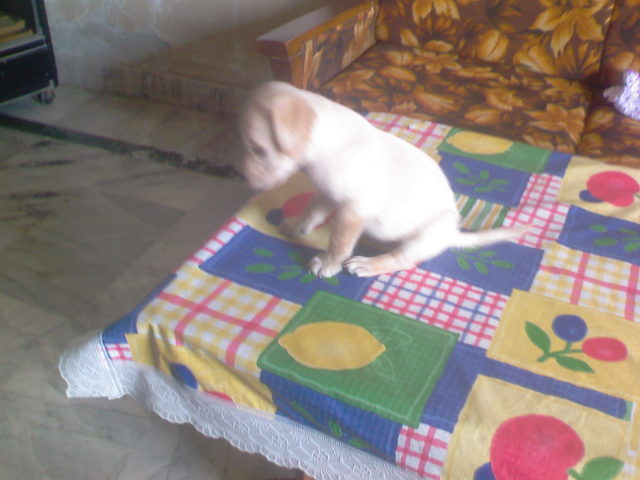 about my female dogs height
Question
sitting on table
i got a fawn coloured female
about my female dogs height
Question
sitting on table
i got a fawn coloured female
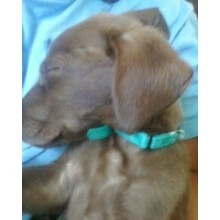 11 week old chocolate lab
Question
11 week old lab
We recently got a chocolate la
11 week old chocolate lab
Question
11 week old lab
We recently got a chocolate la
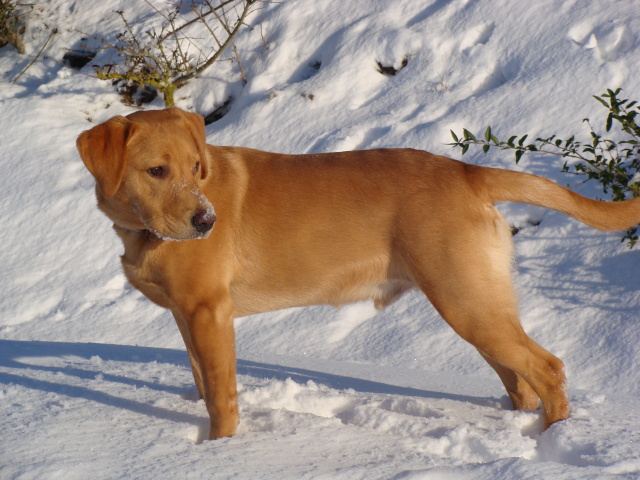 Fox Red/Yellow Lab size query
Question
Hi,
I have a 6 1/2 Fox Red/Yellow lab (Pedig
Fox Red/Yellow Lab size query
Question
Hi,
I have a 6 1/2 Fox Red/Yellow lab (Pedig
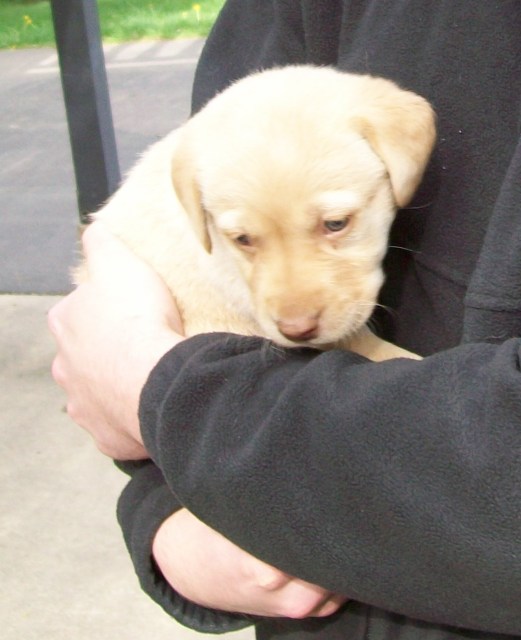 Lab Puppy Eye Color
Question
Yellow Puppy
We are looking at buying a 5 1/2
Lab Puppy Eye Color
Question
Yellow Puppy
We are looking at buying a 5 1/2